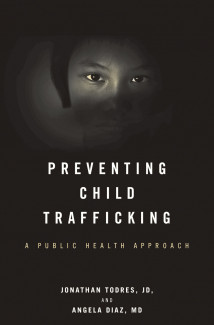
Johns Hopkins UniversityEst. 1876
America’s First Research University
Preventing Child Trafficking: A Public Health Approach

I started researching trafficking and its attendant forms of child exploitation in the late 1990s. Back then, if I mentioned that I was working on “trafficking,” most people assumed I meant drug trafficking. A few even responded by telling me about their frustrations with their morning commute. In the late 1990s, most people had not even heard of human trafficking. More than two decades later, human trafficking is regularly in the news, and hundreds of organizations work on the issue. Legislatures are actively developing law and policy to address the issue. And January is recognized as National Slavery and Human Trafficking Prevention Month in the United States.
In short, we have witnessed a dramatic change over the past twenty years, with human trafficking transforming from a largely invisible issue to one that is recognized as a priority by most governments. Yet, despite this progress and the substantial ongoing antitrafficking work, it’s unclear whether the prevalence of human trafficking has changed. In Preventing Child Trafficking: A Public Health Approach, Dr. Angela Diaz and I draw on public health methodologies to advance a vision for a comprehensive response to child trafficking that is both evidence-based and prevention-oriented.
We focus on the trafficking of children, because the two of us have spent most of our careers working to advance child wellbeing; Angela is the long-time director of the Mount Sinai Adolescent Health Center in New York City, and I am a professor of law who focuses on children’s rights and child wellbeing.
The reality is that child trafficking is a significant issue. Child trafficking occurs in every U.S. state and the District of Columbia—in urban, suburban and rural areas. The consequences are grave; trafficking inflicts physical, sexual, and emotional violence on children (as well as adults).

Responses to date have been largely reactive, often over-relying on law enforcement. Law enforcement plays a critical role, but as we know from other public health issues, we cannot prosecute our way out of the problem. In recent years, the number of sectors involved in antitrafficking work has grown. Today, in addition to law enforcement and social services, entities in health care, education, the media, transportation, and other sectors are engaged. These developments are encouraging, but improving outcomes is not only about involving more sectors. It is also about adopting more effective strategies to address the issue.
Public health methodologies offer important insights into how we can “move upstream” and develop better responses that prevent harm from occurring in the first place. A public health perspective helps us to understand and focus on the underlying attitudes and behaviors that both drive demand for the goods and services produced by exploited individuals and heighten the vulnerability of certain populations. Using the socioecological model, a public health approach can help identify the root causes of child trafficking—at the individual, relationship, community, and society levels—so that we can begin to build long-term solutions.
In the final part of the book, we outline a “toolkit”—a set of questions that individuals and organizations can use to help build and strengthen responses to child trafficking. It is our hope that this framework can move us closer to prevention while reducing harm to those who have already suffered from human trafficking.
In the end, the prevention of child trafficking—and human trafficking more broadly—requires that the United States develop a comprehensive, integrated response to the problem. All sectors have a role to play, and each must ensure that their efforts both build upon and support the work done by others. Ending child trafficking is an enormous task, but by deepening our understanding of the problem and developing evidence-based responses, we can make significant inroads and progress toward that ultimate goal.
Order Preventing Child Trafficking: A Public Health Approach – published on December 17, 2019 – at the following link: https://jhupbooks.press.jhu.edu/title/preventing-child-trafficking
Jonathan Todres is a Distinguished University Professor and Professor of Law at Georgia State University College of Law. He is the coauthor of Preventing Child Trafficking: A Public Health Approach.



